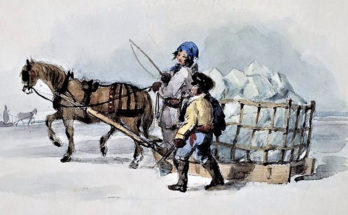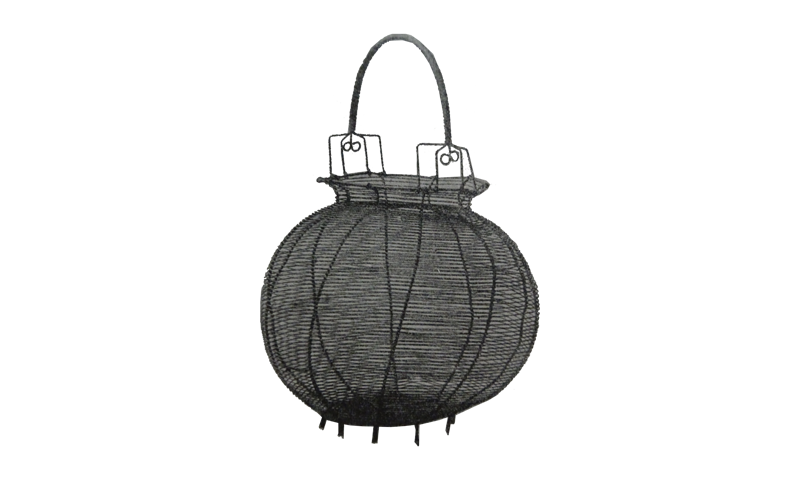Ice-box refrigerators were available by the 1860s but root cellars, ice houses, and winter storage were the most popular forms of refrigeration in the US until the 1880s. (Ice houses were introduced to the UK, probably from Italy, circa 1660.)
In 1900 an average family purchased 2.5 tons of ice per year for the ice box at 30 cents/100 pounds. The price doubled to 60 cents the year after “The Ice King” Charles W. Morse, American Ice Company, established a monopoly in ice. 6.25 gallons of water make a 50 pound block of ice.
Blocks of ice were often kept in sawdust while being delivered by the iceman, and the frugal housekeeper wrapped the ice block in newspaper to prolong its life.[1] The ice block had to be replaced about every two or three days, depending upon the size of the ice box, and other factors.
Two museums in the United States dedicate themselves to the history of the Ice House: Knowlton Ice Museum in Port Huron and the Ice House Museum at Cedar Falls Historical Society, Iowa. Rentschler Farm Museum in Saline, Michigan and Caroga Museum in Caroga, New York are examples of family-farm ice houses. Here is a list of estates in England with ice houses that may be open to the public:
- Christ church Mansion, Ipswich, Suffolk
- Petworth House, Petworth, West Sussex
- Ayscoughfee Hall, Spalding, Lincolnshire
- Rufford Abbey in Sherwood Forest in Nottinghamshire
Video: 1892 Refrigerator Catalog
Seventh Annual Catalogue, Revised Edition, 1892, Challenge Iceberg Refrigerators
The term “refrigerator” was coined by a Maryland engineer, Thomas Moore, in 1800. Moore’s device would now be called an “ice box” — a cedar tub, insulated with rabbit fur, filled with ice, surrounding a sheet metal container. Moore designed it as as a means for transporting butter from rural Maryland to Washington, DC. Its operating principle was the latent heat of fusion associated with melting ice.[2]
[1] Memories of Morse 1904-1979, “Charles Wyman Morse” by John Paul Heffernan, Brunswick Publishing Co., Brunswick, Maine. [2] Refrigerators, by Glenn Elert.


